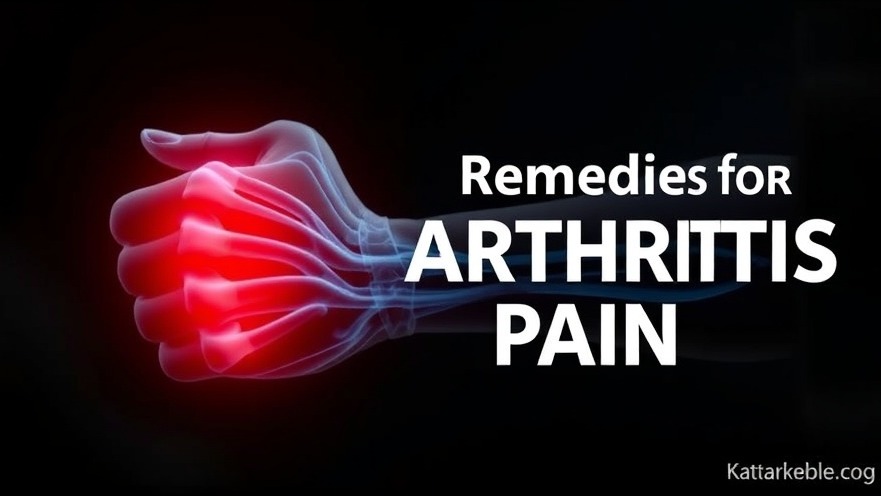
Understanding Arthritis: A Deep Dive
Arthritis isn’t just one condition—it's a broad term that encompasses over 100 types of arthritis, significantly impacting how individuals live and interact with their environment. The two most prevalent types are osteoarthritis, which results from the wear and tear of joints, and rheumatoid arthritis, an autoimmune disorder that systematically attacks the joints. This multifaceted nature of arthritis leads to a range of symptoms, including debilitating pain, reduced mobility, and even emotional challenges like anxiety and depression.
Natural Remedies: A Holistic Approach to Pain Management
As we seek ways to alleviate the pain from arthritis, many turn to natural remedies as a means of enhancing their overall wellbeing. Complementing traditional treatments, these holistic strategies not only address pain relief but also promote a healthier lifestyle. They include simple dietary changes, lifestyle adjustments, and physical activities, all of which serve the dual purpose of reducing discomfort while enhancing the quality of life.
Explore Lifestyle Changes That Make a Big Difference
Weight management is crucial for arthritis sufferers. Carrying excess weight can exacerbate joint pain, particularly in the knees and hips. A well-balanced diet rich in anti-inflammatory foods can alleviate some symptoms. Incorporating fruits, vegetables, whole grains, and omega-3 fatty acids benefits both weight loss and joint health.
Staying Active with Low-Impact Activities
Moving the body can be difficult for individuals with arthritis, but low-impact exercises can strengthen muscles without straining the joints. Activities such as swimming, cycling, walking, yoga, and Tai Chi are excellent options. They not only improve flexibility and balance but can also significantly reduce stiffness and pain. Participating in group classes through local organizations encourages social interaction, motivation, and commitment.
Connecting with Community Resources
Finding support in community resources can provide not only physical relief but emotional comfort as well. Local hospitals, wellness centers, and organizations like SilverSneakers offer tailored programs for seniors that help individuals stay active. These programs foster community spirit and allow participants to engage socially while focusing on their health.
Future Predictions: Trends in Arthritis Treatment
As the prevalence of arthritis continues to rise, especially among the aging population, the healthcare landscape is rapidly evolving to address the needs of these individuals. Innovations in treatments, including regenerative medicine and personalized health solutions, are on the horizon, signaling a shift toward more effective management strategies. Understanding these trends can empower patients to advocate for their health and explore emerging remedies.
Conclusion: Empowering Yourself Against Arthritis
The journey of managing arthritis pain is ongoing, but with the right lifestyle changes and community support, you can reclaim control over your life. Embracing natural remedies is not just about fighting pain; it’s about fostering a lifestyle that promotes happiness, engagement, and vitality.
 Add Row
Add Row 

 Add
Add 


Write A Comment